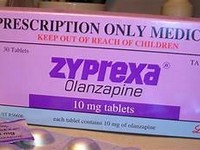Flupentixol
CLINICAL USE
Antipsychotic:Schizophrenia and other psychoses Depression
DOSE IN NORMAL RENAL FUNCTION
Psychosis: Oral: 3–9 mg twice daily —Deep IM: 50 mg 4 weekly – 300 mg 2 —weekly; maximum dose 400 mg weekly; 20–40 mg every 2–4 weeks may be adequate in some patientsDepression: 0.5–3 mg daily (doses above 2 mg should be in 2 divided doses, and 2nd dose should not be after 4 pm)
PHARMACOKINETICS
DOSE IN RENAL IMPAIRMENT
GFR (mL/MIN)
DOSE IN PATIENTS UNDERGOING RENAL REPLACEMENT THERAPIES
IMPORTANT DRUG INTERACTIONS
Potentially hazardous interactions with other drugs
ADMINISTRATION
Reconstition
–
Route
Oral, IM
Rate of Administration
–
Comments
–
OTHER INFORMATION
May cause hypotension and sedation in renal impairmentIncreased CNS sensitivity in renally impaired patients – start with small doses as can accumulateFor IM injection a 20 mg test dose should first be givenOral bioavailability is 40–55% Peak levels occur 7 days after IM injection and 4 hours after oral administration.
